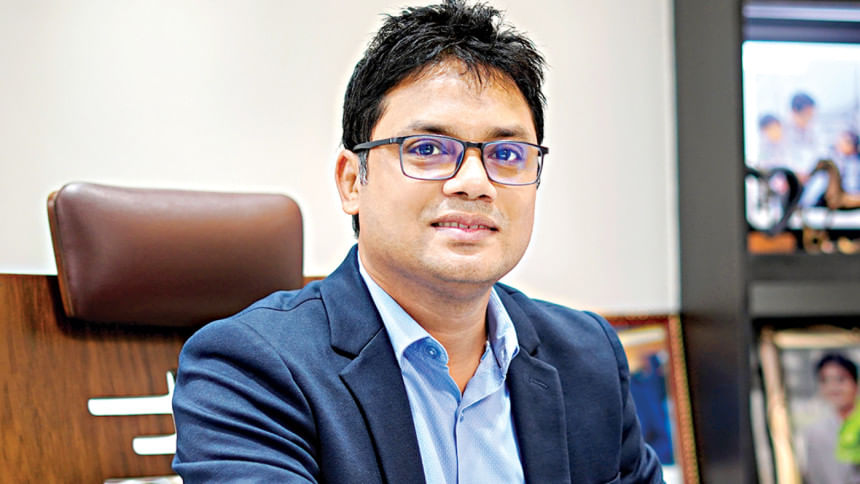Bots, Brains, and Brilliant Kids

Monir Hosen Chairman, Creative Business GroupCreative Juniors, a concern of Creative Business Group, is reshaping how children in Bangladesh learn technology. Through Robotics, Artificial Intelligence, Coding, and App Development, the platform is fostering creativity, confidence, and cognitive brilliance among learners aged six to sixteen. The Daily Star (TDS): What was the primary motivation for establishing Creative Juniors?Monir Hosen (MH): Children today grow up surrounded by smar...
Monir Hosen
Chairman,
Creative Business Group
Creative Juniors, a concern of Creative Business Group, is reshaping how children in Bangladesh learn technology. Through Robotics, Artificial Intelligence, Coding, and App Development, the platform is fostering creativity, confidence, and cognitive brilliance among learners aged six to sixteen.
The Daily Star (TDS): What was the primary motivation for establishing Creative Juniors?
Monir Hosen (MH): Children today grow up surrounded by smart devices but rarely understand how they work. Creative Juniors was created to help them move from consuming technology to creating it. Our goal is to nurture curiosity, imagination, and logical thinking from an early age so that children can design, code, and innovate with confidence. We want every child to discover that technology is not just for use; it is for creation, exploration, and leadership.
TDS: How are your courses structured and tiered for different age groups?
MH: Our three-level curriculum grows with each age group — from visual logic, storytelling, and basic robotics (ages 6–9), to coding, app design, and sensor-based projects (ages 10–12), and finally to AI-powered applications and advanced robots like Sumo, Walking, and Motion Robots (ages 13–16).
TDS: What teaching methodologies do your instructors use?
MH: We use project-based learning, gamification, and hands-on experimentation. Every student learns by doing-assembling robots, coding games, and presenting their projects inside the Digital Lab. Students explore how AI can be practically applied by creating intelligent robots. Our classes are intentionally small to ensure individual mentoring. Alongside robotics, we emphasise coding fundamentals, communication, and presentation skills to help students express ideas confidently and think like young innovators.
TDS: How do you develop and update your courses?
MH: Our R&D team collaborates with global educators and university experts to review and update modules twice a year. We continually add emerging concepts such as AI automation, design thinking, and digital creativity to our robotics and coding programmes. As developed nations prioritise these skills at school level, Bangladesh must follow suit to stay competitive.
TDS: What do you see as the biggest challenges and opportunities for creative education for children in Bangladesh in the coming years?
MH: The main challenge is awareness. Many parents still see technology only as entertainment, not as a tool for learning or innovation. We need to change that mindset. Another challenge is the shortage of trained educators and hands-on learning spaces. However, the opportunity is tremendous. Bangladesh has a young, creative generation eager to learn. If guided properly through structured programmes in Robotics, Coding, and AI, these children can become future innovators and global tech leaders.